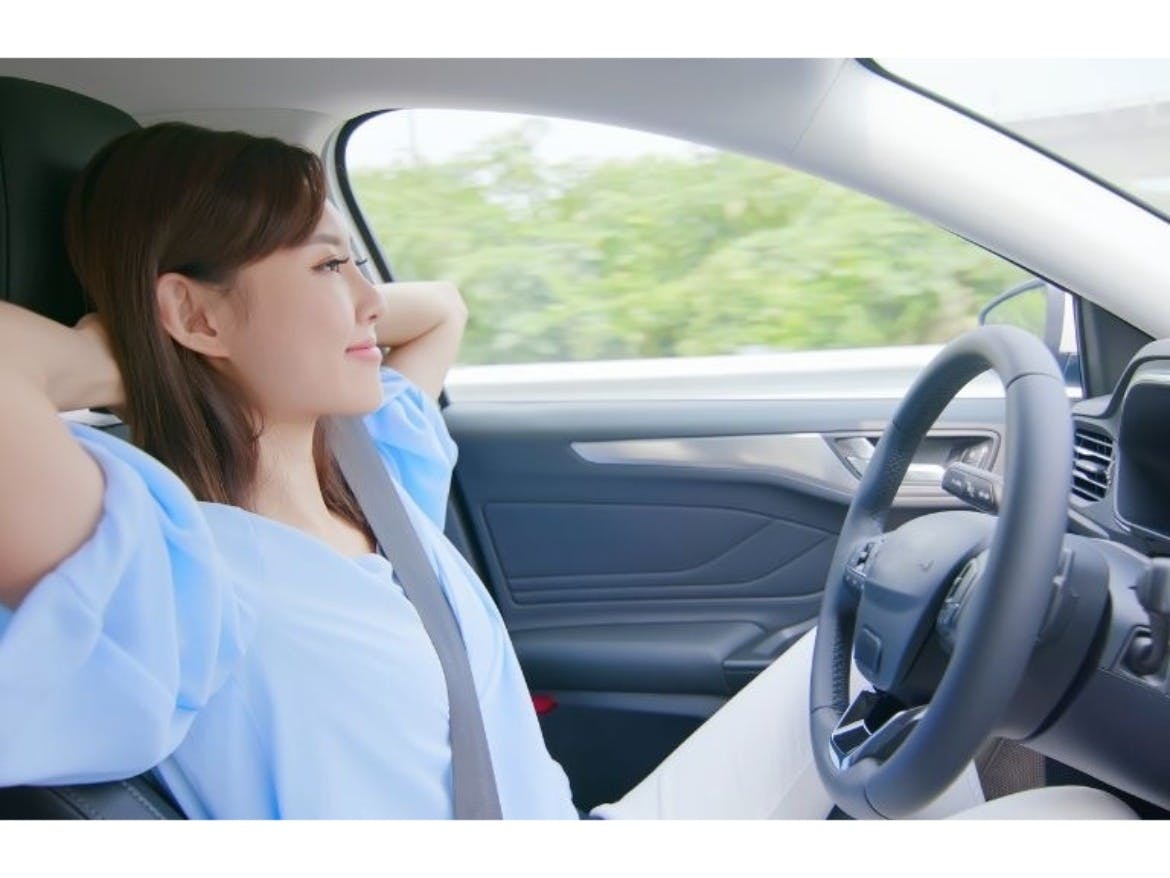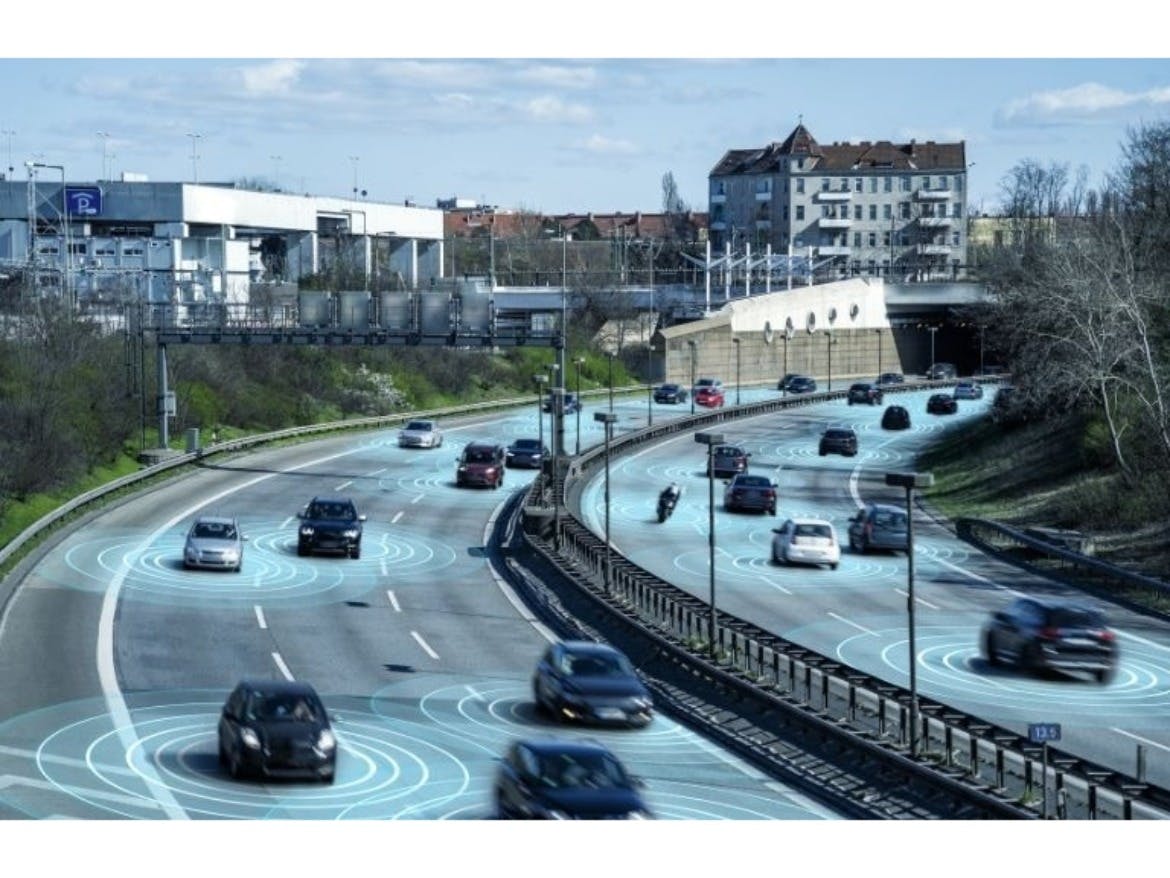
You need only think back a few years to realise how sophisticated standard car technology has become. We barely notice the convenience offered by power steering, electric windows – who remembers manual winders? – parking sensors and keyless start. They all make motoring easier for disabled and non-disabled drivers alike. And they’re widely fitted as standard on today’s cars. But what of the increasingly sophisticated tech appearing in our cars – including those you can lease through the Motability Scheme? Read on to see how smarter in-car tech will help us in 2024 and beyond…
Today, more disabled people than ever before drive their own car, thanks in part to the incredible advances in vehicle technology over the past few decades. Many of the standard and optional features that can now be found on modern cars to help drivers with a disability, would in the past have been fitted after it had left the factory, or they simply hadn't been invented yet. Options like electrically adjustable seats, heated seats, head up displays, adaptive cruise control, remote boot release buttons, voice recognition systems and 360 degree exterior cameras can now be chosen to make driving safer and easier. Automotive tech is always evolving, and even smarter features are just around the corner.
Most people are likely aware of the imminent arrival of so-called autonomous cars. There is a spectrum of autonomy, from cars that are driven manually with a bit of driver assistance (such as cruise control), right through to vehicles that are able to self-drive under the control of sophisticated computer management.
They exist – and with them, a whole new range of problems, not least the wisdom of allowing drivers to watch films while cars are moving! As an article in the Telegraph noted, ‘Cars of the future will probably look rather like the ones we have right now: the four wheels, the boot and bonnet, the windows and doors. But new tech, on the exterior and interior, will fundamentally change the very way we drive – and make us a lot safer.’
One of the most noticeable effects of new technology will be how the role of the steering wheel – a defining feature since Packard abandoned tiller steering with 1901's Model C – is likely to change. The article even suggests that ‘the steering wheel could become optional’ as computers handle more and more vehicle management. The changes mean greater convenience and safety for all drivers – but with particular benefits for disabled motorists.

Once, internally adjustable mirrors, dual-circuit brakes and heated rear screens were the height of automotive tech. Now that honour goes to smart sensors, autonomous braking and AI-controlled adaptive cruise control systems that were once reserved for automotive fantasy.
Suddenly, car talk has moved from diesel vs. petrol to autonomous vs. conventional vehicle management. In testing, autonomous cars packed with smart technology have successfully travelled thousands of miles without human intervention. They can self-drive and direct themselves to electric vehicle (EV) charging points when their batteries are nearly empty. They can even send real-time fault notices to mobile devices, manufacturers and breakdown organisations.
Just as all the existing internal combustion engine (ICE) cars won’t suddenly disappear in 2035 (when the ban on new petrol and diesel cars comes into effect in the UK), it’s unlikely that every journey will be autonomously controlled within a similar period. However, as 2024 begins, what’s undeniable is that twenty-first century car technology is making life safer and more convenient for disabled and non-disabled drivers alike.
Given the rate of automotive innovation, something else is clear as another year starts. In 12-months, today’s ‘leading edge’ technology will have started to filter down from early adopters’ prestige cars to family SUVs and city cars.
From a disabled drivers’ perspective, many current motoring aids specifically designed for motorists with a disability will probably stay very similar. These include simple vehicle adaptations to help with driving, devices for loading mobility equipment such as wheelchairs and mobility scooters, and features that help passengers and drivers when getting into and out of a vehicle.
For many years post-factory fitted equipment - like those mentioned above - has been helping drivers with a disability. The latest smart tech will do much more of the same. Whether we drive a car leased through the Motability Scheme or not, technology such as radar-based adaptive cruise control, lane departure alerts and lane trace assist is already transforming our safety. Here are some of the new tech trends to watch in 2024:
Augmented Reality (AR) will help drivers with things as diverse as terrain mapping, sophisticated parking help and intuitive road safety. Look out as AR jumps from dashboard to windscreen in ways that make traditional head-up displays look so last year!
Watch as this goes way beyond the autonomous emergency braking that many vehicles already have. In 2024 and beyond, autonomous vehicle technology will only keep developing in pursuit of the level 5 autonomy ‘holy grail’ that doesn’t need a human driver.
The Society of Automotive Engineers has developed a range of levels to classify the degree of autonomy:
Level 3 is the current state-of-the-art. Expect super-smart level 4 cars in the second half of the current decade. And level 5? Well, it's worth noting that some industry experts question whether full level 5 self-driving automation is actually possible.
Still, more automation is coming to UK roads, and UK Transport Secretary Mark Harper is fully behind it. Speaking on BBC Radio 4’s Today programme in December 2023, Harper said that the development of autonomous driving will "improve road safety" in the UK, and that for people with disabilities "who don’t have the same freedom that driving brings the rest of us...this potentially opens up a whole new world for personal freedom, getting to work, having the ability to not have to rely on other people."
In 2024, expect to see more sensing technology that overcomes the limitations of existing camera technology, Light Detection and Ranging (LiDAR), Radar and ultrasonic sensors. And you thought the current tech was impressive...
Not least, expect huge leaps forward in the widespread adoption of AI systems to oversee driver behaviour. Just look at the work of technology manufacturers such as Bosch with their systems for detecting fatigue and ‘microsleeps’. It’s another area for more development – and heightened road safety.
Such technology underpins the features we’ll soon take for granted in our EVs. Behind this tech inevitably lies an increasing number of parts (today’s cars typically have around 30,000). And then there’s the mind-blowingly complex coding needed to manage car tech. A typical car has around 100 million lines of code. Compare that to about 50 million lines in your computer’s Windows 11 software! Chip manufacturers allowing, more complexity is inevitable as car systems increasingly communicate with each other and highway infrastructure. Like so much in-car tech, you can’t see it. But you’ll experience the benefits as you keep driving smoothly and safely.

Many technology advances will go with EVs ascendancy. That said, it’s clear that 2024’s biggest changes will be in automated driving and cars’ smart connectivity. The changes ahead will help all drivers, including the important subset of drivers who are coping with a physical or mental disability.
Wider availability of automatic transmissions (EVs only have one gear) and simple remote-controlled in-car equipment already helps disabled drivers. Similarly, the latest smart tech is delivering more of the same. Think about AI that watches the world around your car. Or smart breakdown technology that helps if your car goes wrong. The latest tech developments add up to a once unimaginable motoring experience. It’s a world where novel AI applications, increased vehicle autonomy and adoption of other in-car tech removes more and more decision-making from drivers.
Sometimes, perhaps, we’ll think that we will miss some traditional driving pleasures. Then we’ll remember the many more situations where new technology makes driving simpler, safer and more economical on increasingly busy roads. Technology never sleeps, and the once inconceivable is happening right under our wheels!
It is thought that around 10% of people who currently lease a car through the Motability Scheme (which helps disabled people, their families and carers in the UK to drive a new vehicle) need additional specialist features fitted to the vehicle after it has left the factory. Adaptations include features like wheelchair and mobility scooter boot hoists, swivel seats, changes to the pedal layout and complex steering aids. Much of this technology and equipment is developing too, helping more drivers with limited mobility and disabilities to access and drive their own vehicle.
The good news is that through the Motability Scheme, many of these adaptations can be supplied and fitted at no extra cost. Motability specialists at Motability-accredited dealerships across the UK are fully trained to provide help and advice to disabled drivers about the range of adaptations available.
New, game changing, in-car tech is on the way. For sure, 2024 won’t be the year that we get into our new car, command a cross-country journey and sit back while technology takes the strain, but it does feel like it's not that far away.
Disabled or non-disabled, Motability car or not, smart technology will continue transforming our motoring in 2024 and beyond. But for now, please remember to keep your eyes on the road – and your fellow motorists!
Sources
https://www.telegraph.co.uk/cars/driving-smart/in-car-smart-tech/
https://www.lifewire.com/how-augmented-reality-could-change-the-way-you-drive-7093293
https://www.sae.org/blog/sae-j3016-update
https://www.carriermanagement.com/features/2023/09/22/253499.htm
https://www.bosch-mobility.com/en/solutions/assistance-systems/driver-drowsiness-detection/